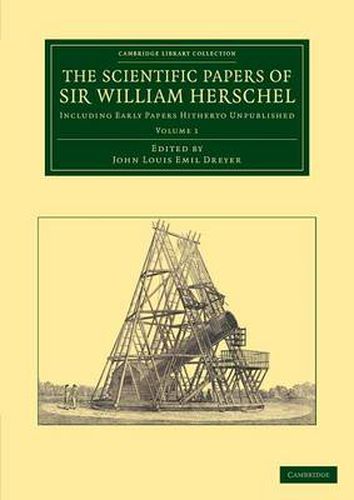Readings Newsletter
Become a Readings Member to make your shopping experience even easier.
Sign in or sign up for free!
You’re not far away from qualifying for FREE standard shipping within Australia
You’ve qualified for FREE standard shipping within Australia
The cart is loading…






By the time of his death, William Herschel (1738-1822) had built revolutionary telescopes, identified hundreds of binary stars, and published astronomical papers in over forty volumes of the Royal Society’s Philosophical Transactions. This two-volume collection, which originally appeared in 1912, was the first to gather together his scattered publications. It draws also on a wealth of previously unpublished material, from personal letters to numerous papers presented to the Philosophical Society of Bath. Although Herschel is best known for his discovery of Uranus, this collection highlights the true range of his observations and interests. Focusing on his early work, Volume 1 includes notes on the discovery of Uranus, unpublished papers on electricity, and studies of the lunar mountains and the poles of Mars - both of which he believed to be inhabited. It also features a biographical account by the historian of astronomy J. L. E. Dreyer.
$9.00 standard shipping within Australia
FREE standard shipping within Australia for orders over $100.00
Express & International shipping calculated at checkout
By the time of his death, William Herschel (1738-1822) had built revolutionary telescopes, identified hundreds of binary stars, and published astronomical papers in over forty volumes of the Royal Society’s Philosophical Transactions. This two-volume collection, which originally appeared in 1912, was the first to gather together his scattered publications. It draws also on a wealth of previously unpublished material, from personal letters to numerous papers presented to the Philosophical Society of Bath. Although Herschel is best known for his discovery of Uranus, this collection highlights the true range of his observations and interests. Focusing on his early work, Volume 1 includes notes on the discovery of Uranus, unpublished papers on electricity, and studies of the lunar mountains and the poles of Mars - both of which he believed to be inhabited. It also features a biographical account by the historian of astronomy J. L. E. Dreyer.